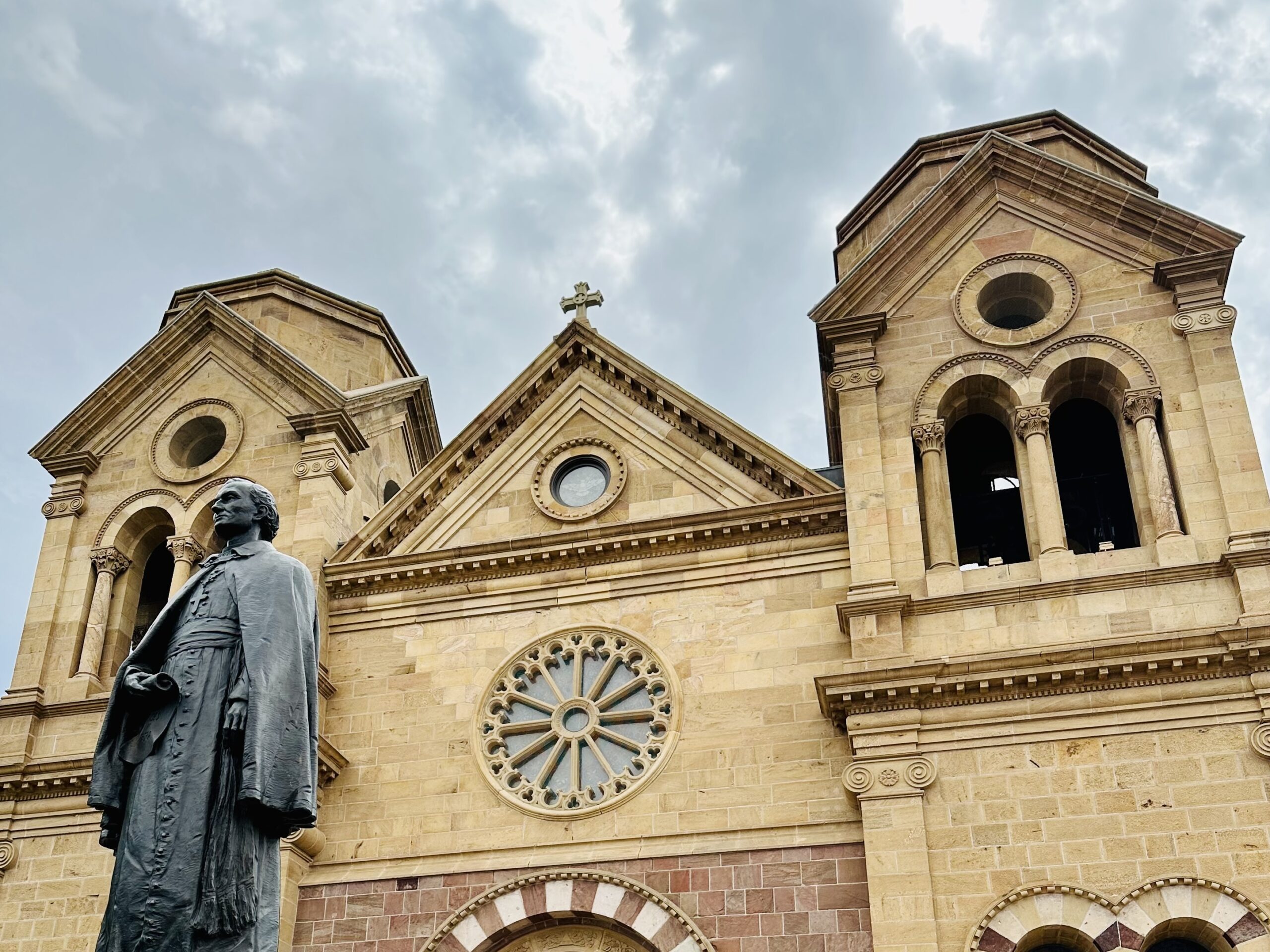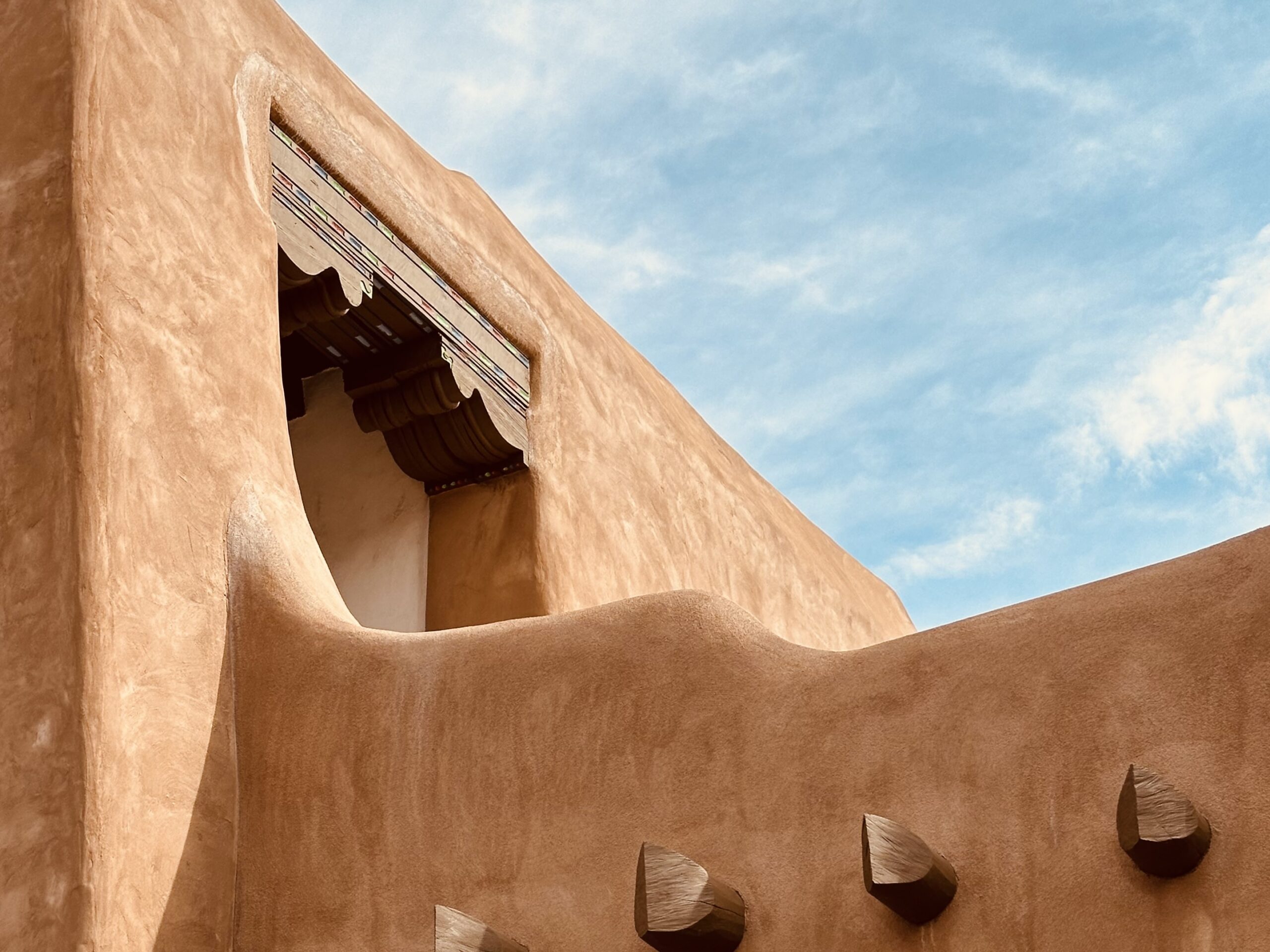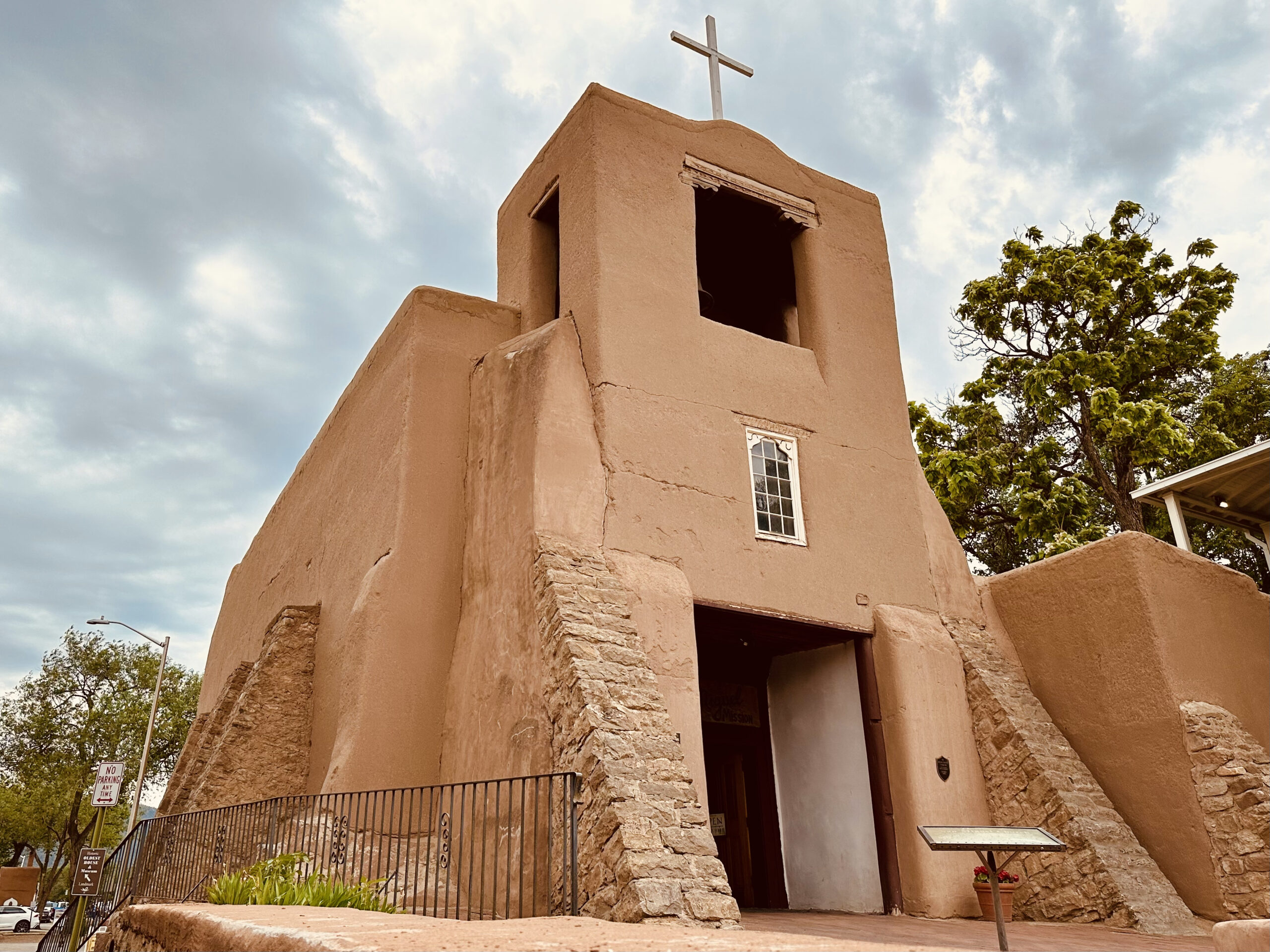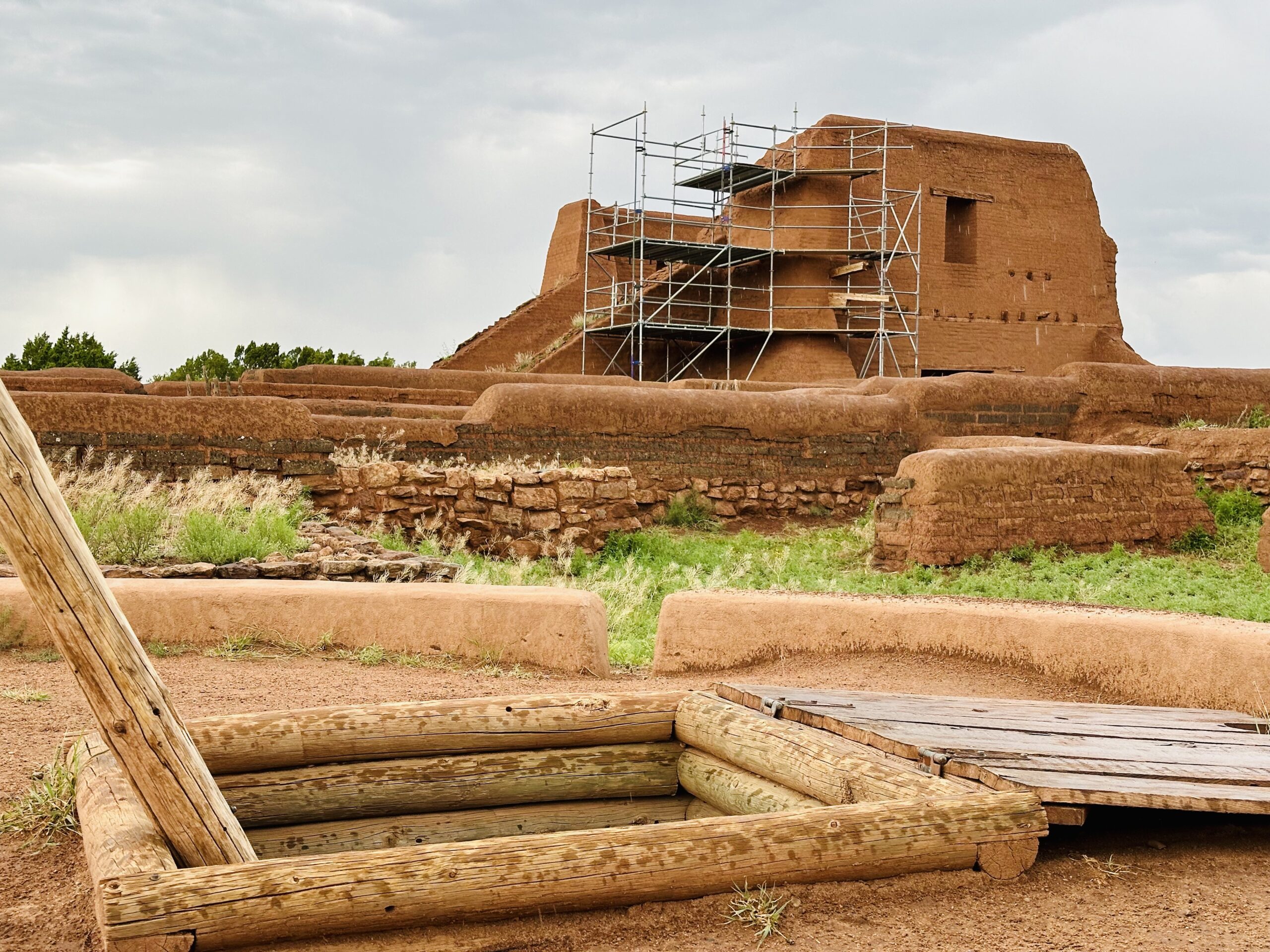
There is no sight more gratifying to me than the open road, for the open road allows the body to wander and the mind to wonder. It offers an escape for the imagination and a way of life governed by freedom and fueled by curiosity.
My name is Alexander, and I am a sophomore in Timothy Dwight College studying political science and history. Naturally, my day is complete with writing papers, reading research articles and attending lectures. And as much as I am a Yale student, I consider myself a student of the world with the open road as my classroom.
This travel column, On the Road, recounts several of my adventures on asphalt and all the lessons I have learned from the people, places and things I have encountered on all roads, from those well-traveled to those not taken.
***
The clouds crested over the Sandia Mountains and shrouded Albuquerque in a blanket of warm golden light as we left the city. After a short, hour-long drive north, we made it to Santa Fe.
It was a sleepy morning. The air seemed to move at a yawn’s pace. The trees in Santa Fe Plaza were swaying ever so gently, shaking off the past night’s slumber from their tired, weary leaves. The morning was cool, but made more comfortable by the canopy of clouds that began to obscure the sun from sight.
Santa Fe, as I saw it that morning, would enchant any artist. The skyline was defined by the crosses of brown churches and the smooth curves of Pueblo Style hotels and homes. The streetscape offered a medley of color from cinnamon-colored porches to shawls in magnificent shades of turquoise hanging from street stalls. On every corner or so resided with ristras, strings of chiles thought to bring luck. They varied in length and tone, featuring every shade from crimson to claret, and danced in the morning wind with care and intention.

We began our morning by walking around Santa Fe Plaza. Many museums were closed. Restaurants and shops were just beginning to open. While businesses have yet to start their day, local artisans have already done so. On any given day, such as the one my parents and I enjoyed in Santa Fe, you would hear their calls, increasing in volume and creativity as they seek to outdo the other for the attention of passersby. Laying traditional Native American art, accessories and handicrafts on mats and tables, the artisans occupied the portal of the Palace of the Governors, a block-long porch on its facade opposite Santa Fe Plaza.
The Palace of the Governors, despite its humble and modest facade, has a rich history. Built in 1610, it has served as a seat of government for New Mexico since its construction. It has exchanged hands, seen people come and go, and watched Santa Fe evolve in its roughly four centuries of existence. Today, it is home to the New Mexico History Museum while artisans reside in its portal with the intent of selling their wares from dawn till dusk.
By the time my parents and I made our rounds on Santa Fe Plaza, it began to swell with life. Museums welcomed curious visitors. Restaurants opened their doors and set their tables in anticipation for brunch. Tourists accumulated on the streets, either taking photos or peering into store windows. As the day began to bubble with energy, my parents and I made our way to the Cathedral of Saint Francis.
The cathedral is situated on a small hill just down the street from the plaza. While not as tall and wide as other cathedrals in other cities, it retains a bold command and presence over the Santa Fe skyline. The definition of its square towers stand in juxtaposition to the rose window that hangs above its bronze doors. Romanesque in style and copper in color, it was constructed from 1869 to 1887. As it was on the outside, it was beautiful on the inside.
We entered Saint Francis Cathedral just as it opened for the day. Passing through a strategically-placed gift shop at the front of the church, we entered the nave. I easily noticed that the walls and the cathedral’s columns were painted in a warm white. Just below the vaulted roof were stained glass windows that allowed the sun to shine through and illuminate the nave in the soft glow of the morning light. We walked around the church for a while and were joined by other travelers in admiring its architectural beauty. We then left to continue our walking tour of downtown Santa Fe, eventually making our way to Loretto Chapel.
An architectural outlier, Loretto Chapel stood out from its neighbors in the same way a STEM major would from a history seminar. By manner of appearance and comportment, it grabbed my attention easily. It had Gothic angles, sharp spires and a triangular roof — three things absent from the sea of smooth curves that defined the rest of Santa Fe’s skyline. Besides its unique architecture, it is known for its spiral staircase.
Standing at 20 feet tall and made of wood, the staircase is helical in shape, resembling a coiled ribbon. It makes two complete turns without the use of a central pole for support. It is held together, not by nails or any unique form of adhesive but by wooden pegs. Its composition, construction and origins have baffled many, leading many, such as myself, to visit it and contemplate both its beauty and mystery.
Shortly after it was completed in 1878, Loretto Chapel needed a staircase that would provide access to the choir loft while allowing for seating in the chapel’s nave. Building a staircase that accomplished both objectives was a challenging puzzle. As a result, for nine days, the Sisters of Loretto prayed to Saint Joseph, the patron saint of carpenters, for a solution. At the end of their novena, a stranger arrived at the chapel and built a spiral staircase over the course of a few months. He then left, asking for no compensation or praise, and vanished without a trace. Local legend states that the wandering carpenter was none other than Saint Joseph himself.
Over the years, many theories have been suggested regarding the identity of the mysterious woodworker or the precise method of the staircase’s construction. Despite the cloak of mystery that surrounds the staircase, one thing is certain. Regardless of how you look at it, the staircase is a beautiful work of art and craftsmanship. This quality was not lost on my fellow visitors. The tourists in the chapel that day sported faces of wonder while looking at the staircase. I, too, was fascinated. Partly due to the intrigue of the legend, but more so for the staircase’s aesthetic allure, I inspected the staircase with the same level of attention an English professor would devote to a student’s essay. My eyes traced each curve in its helix. They counted each step, climbing the staircase up, down and back again for what seemed to be a very long time.
Just a short walk from Loretto Chapel is another historic church. This one, however, is not known for its mystery but for its age. San Miguel Chapel is the oldest church in the continental United States, having been built in 1610. Its color resembled warm, autumn cider. It was surrounded by unplastered brick buttresses, and its adobe facade was visibly cracked with time. Atop its entrance is a small and short bell tower adorned by a white and wooden cross.

The chapel was dark. Whatever light that inhabited its nave emanated from two sources: the entrance, with its doors ajar, and lights illuminating and the altar’s reredos. Upon entering the chapel, following the practice of visitors before me, I grabbed a hammer and rang its bell. As its toll reverberated on the old walls, I walked toward the altar and glanced upward. I noticed, rather quickly, that the wooden beams that supported the church’s roof were slanted and bent at a very subtle angle. A curious architectural detail to be sure, it was one that left my perfectionist mind amused and puzzled as we left.
There is not much that differentiates a road tripper from a collector, for a road tripper, regardless of means or measures, assembles a collection of places. For some travelers, the main intention is to visit every national park from Yosemite to Acadia. For others, the object of their adventure is to visit every brewery from Milwaukee to Asheville. And then, for some, is the goal to collect superlatives. And this trip seemed to accomplish just that. Two days earlier, we visited Winslow’s self-proclaimed “World’s Smallest Church.” Two years earlier, we stumbled across the “World’s Tallest Thermometer” in Baker. We just finished visiting the oldest church in the continental United States when we came across another curious establishment.
Next to San Miguel Chapel, across a small path, was another curious establishment. Like the church, it was a structure built of adobe. It furnished a sign saying the following: “Oldest House in the USA, circa 1646.” Granted, there are other homes across the nation that are far older. However, we were curious and, since the museum was free and because we were already there, we walked in.
The home, or at least the part of it open to the public, was small. It housed two rooms. The first, resembling a parlor, was host to a loom, chest and box among other things. The second featured an oven and table displaying food items of the era. Disregarding the electric lights and placards hanging on the walls, it felt like a journey into the past. As my parents moved into the second room, I stayed in the first one as an artifact caught my eye.
It was a table. It barely made it above my knee. It was made of wood and covered in a hand-woven blanket. I walked closer to examine it further. That was when I realized it was not a table. It was a coffin.
At its head was a glass panel allowing someone to peer inside. There were no remains. Instead, what I found was an empty vacuum behind obscure glass that was dark enough to remind someone of their mortality. I did not expect to stumble upon a coffin and was taken aback. A placard above it told its story and that of the person who once lay in the coffin. There was something about a Spanish soldier, then something about a ghost. My memory fails me in recollecting the narrative in full, as much as I would like to, but what I do remember was that it left me fascinated and unsettled.
The house, and the surrounding area, has experienced much since its construction, from violence to suffering. Reflecting on that medley of events and emotions made staying in the house feel uneasy and almost eerie. I stepped outside. By then, the skies grew darker. The winds grew cooler. A clear departure from the warm, desert weather we grew accustomed to for the past three days, we walked back toward downtown Santa Fe, returned to our car and set off for the day’s journey ahead.
It began to rain. Small droplets of water began to pitter and patter on our windshield as we made our way out of Santa Fe. To see drops of water accumulating on our windshield was almost surreal, considering how I could still feel the blistering heat of the Mojave Desert of the past few days sail its way across my skin. By the time we were crossing the Glorieta Pass, the sprinkles turned into rain. The skies turned into a darker shade of gray reminiscent of graphite fresh from a newly-sharpened Ticonderoga pencil. With the weather conditions slowly getting worse, we made our way to our last stop.
Pecos National Historic Park was remarkably empty when we parked at the visitor center. There was a mother with her two kids gearing up to walk a trail in the rain. Just a few feet away was a family gathered under an awning, eating a picnic lunch on a bench. A ranger stood by the gift shop, discussing rain patterns at the park with a hiker, while another ranger manned the register. We spent little time at the visitor center before driving to another parking lot that gave us direct access to the ruins at Pecos.
The afternoon was creeping up on us, and the rain began to fall in earnest. As its drops drummed on our car hood, I saw from the windshield the remains of an old Spanish mission. With each passing second, it began to turn a darker shade of orange-brown. Just beyond a few trees were the ruins of the Pecos Pueblo. While my parents opted to view them from the comfort of our warm and dry car, I, being the historian and travel columnist that I am, wanted a closer view of the ruins. So, I disembarked and walked into the cold and rain.

Puddles grew deeper. Winds whistled stronger. Streaks of water ran across my glasses. Rain droplets bounced off my camera lens. Despite this, I took as many photographs as I could while trying my best to savor the moment and the environment I was in. I walked around the ruins in haphazard fashion with the goal of finding good camera angles and the foolish hope of keeping my already-soaked polo dry.
The ruins of the old mission were covered in metal scaffolding; they were being restored. Just as I approached the mission, I heard a rumble beat across the sky. Thunder. Given that my surroundings were relatively flat and that I was standing near scaffolding, I told myself that being struck by lightning would be too exciting for me to recount for this column. Not wanting to add a hospital to the trip’s itinerary, I finished capturing photographs and jogged back to our car. We left shortly thereafter.
Leaving Pecos and driving south toward Interstate 40, we found ourselves with another appointment with the unexpected. Our first meeting was with trouble concerning our first rental car in Bullhead City. It seemed that our second was with a thunderstorm in eastern New Mexico.
The wind glided across the highway with the musicality of violins. The rain pelted our car, creating a sound reminiscent of drums trying to find their beat. Lightning struck the Sangre de Cristo Mountains, and its sharp white streaks moved across the sky with a precise gracefulness akin to that of a conductor in control of his orchestra. A few miles and minutes later, the rain and lighting stopped, but the sky remained an ominous shade of gray. This, however, proved to be a brief interlude in what has proven to be a symphony of a storm.
As we got onto the interstate, lightning flashed in the distance, cutting above the New Mexico plains. Rain diluted a sky once blue and turned it into a sad dome of a despondent blue-gray. Day and night were engaged in a battle over control of the afternoon sky. With the rain growing stronger and the view getting darker, we pressed on. With hopes of reaching Amarillo by evening, we headed into the storm.







